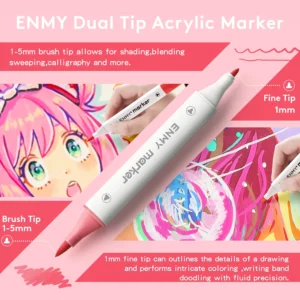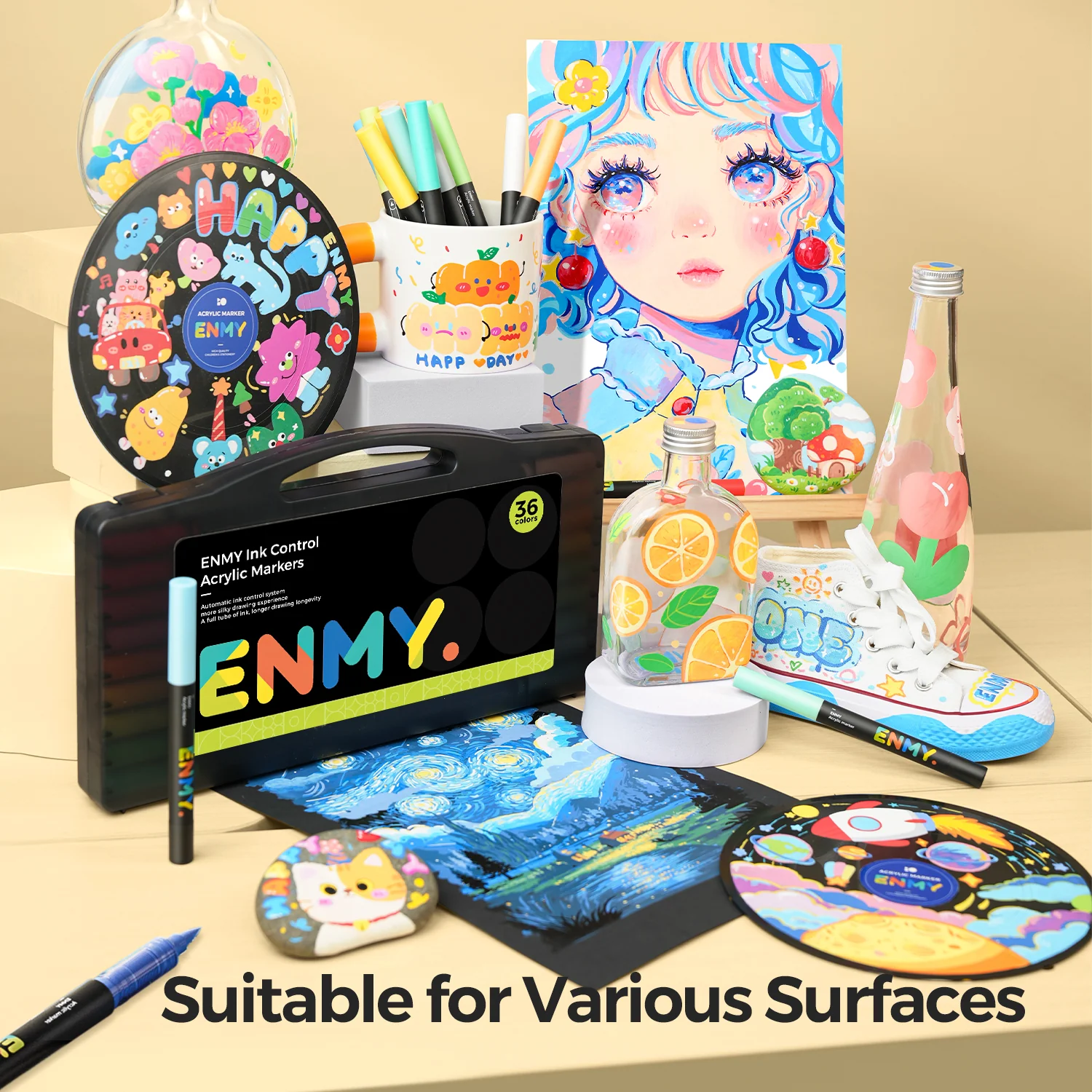In the field of contemporary artistic creation and decoration, acrylic paint occupies an important position with its unique charm. It can not only show rich color layers like oil paint, but also has the characteristics of easy cleaning like watercolor paint, and also has many advantages such as quick drying and water resistance. However, the production process behind this material, which is favored by creators, is rarely known. From the careful selection of various raw materials to the integration and transformation through complex processes, every step embodies the wisdom of science and art.
The excellent performance of acrylic paint first comes from its carefully matched raw material components, which, like the “genetic code” that constitutes it, determine the color, texture and use characteristics of the paint.
Pigment, as the core of acrylic paint, is the key to endow it with color. It is mainly divided into two categories: inorganic pigments and organic pigments. Inorganic pigments such as titanium white, with its super covering power, have become the main force of white pigments; iron oxide series can present a series of warm colors from red to yellow to brown, with strong stability and excellent light resistance. Organic pigments are better in terms of color brightness and richness. Azo pigments can 调配出 bright and warm colors such as bright red and lemon yellow, while phthalocyanine pigments are high-quality sources of blue and green, which greatly expand the color range of pigments. In addition, in order to meet the needs of special artistic effects, some acrylic paints will also add metal powder or pearlescent particles. These special components can make the paint show a dazzling luster under light, adding a unique visual impact to the work.
The binder is the “skeleton” for acrylic paint to form a strong coating, and its core is acrylic resin emulsion. This emulsion is made of acrylic ester monomers, such as methyl methacrylate, butyl acrylate, etc., through emulsion polymerization. It is like an excellent adhesive, which can tightly bond the small pigment particles together. When the paint dries, it will form a tough and elastic film. This film can make the paint firmly adhere to various surfaces such as canvas, paper, walls, wood, etc., and is not easy to fall off.
Although additives account for a small proportion in acrylic paint, they play a crucial regulatory role. Dispersants can make pigment particles evenly dispersed in the system, prevent them from aggregating and precipitating, and ensure the fineness of the paint texture; thickeners can adjust the viscosity of the paint, making it suitable for both thick coating and thin coating; preservatives can effectively inhibit the growth of microorganisms and extend the shelf life of the paint; defoamers can reduce the bubbles generated during production, avoiding unsightly pores in the paint when in use; plasticizers can increase the flexibility after film formation and prevent the paint film from cracking due to environmental changes.
Different from oil paints that use volatile organic solvents, the main solvent of acrylic paint is water. Water can not only dissolve and dilute the acrylic resin emulsion, making the paint reach a concentration suitable for painting, but also make acrylic paint more environmentally friendly, easy to clean after use, and greatly reduce the harm to the human body and the environment.
The production process of acrylic paint is a precise “transformation journey”. Each link needs to be strictly controlled to ensure the quality of the final product.
Pigment pretreatment is the first step in production and the key to ensuring the fineness of the pigment. Solid pigments need to go through crushing, grinding and other treatments to become extremely fine powders. This process is like “polishing” the pigment. The finer the powder, the stronger the tinting strength of the pigment, and the smoother the texture when painting. Professional grinding equipment can refine pigment particles to the micron level, allowing the pigment to better integrate with other components in subsequent mixing.
In the mixing and dispersing stage, it is like a “raw material party”. The pretreated pigment powder, acrylic resin emulsion, water and various additives are put into the dispersing equipment according to precise proportions. The dispersing equipment is like an efficient “stirrer”. Through the shear force generated by high-speed rotation, various raw materials are fully mixed, and the pigment particles are evenly wrapped in the resin emulsion to form a preliminary mixture.
Grinding and refinement is a link to further improve the quality of the pigment. The initially mixed materials will be sent to more precise grinding equipment, such as sand mills. During the grinding process, the pigment particles in the material will be further refined, and the integration between various components will be more sufficient. This step can completely eliminate the granular feeling in the mixture, making the pigment texture smooth and delicate, ensuring that it can be smoothly attached to various surfaces when painting.
In the performance adjustment stage, technicians will fine-tune various indicators of the pigment according to different product requirements. For example, adjusting the consistency of the pigment by adding an appropriate amount of thickener or water; ensuring the stability of the pigment by adding pH regulators. This step is like “tailor-made” for the pigment, enabling it to meet the usage habits and creative needs of different creators.
Filtration and packaging is the last step of production. After the previous processes, the pigment needs to be filtered to remove possible impurities and incompletely dispersed particles, ensuring the purity of the pigment. Then, the qualified pigment will be filled into packaging containers of various specifications, labeled, and finally become the acrylic paint products we see on the market.
It is precisely because of its unique raw material composition and sophisticated production process that acrylic paint has many advantages that other pigments cannot match. It dries quickly, usually within a few minutes to a few hours, which greatly shortens the creation cycle and allows artists to carry out overlay creation faster; the dried paint film is water-resistant and wear-resistant, suitable for outdoor murals and other scenes; its colors are full and long-lasting, not easy to fade, enabling works to be preserved for a long time; moreover, it can be thickly applied like oil paintings to create a strong three-dimensional effect, or thinly applied like watercolors to present a transparent effect, with extremely rich forms of expression.
From carefully selected raw materials to rigorous and precise production processes, the birth of acrylic paint embodies countless wisdom of science, technology and art. It not only provides more possibilities for artistic creation, but also allows ordinary people to have more convenient and high-quality choices when decorating their lives and expressing their creativity. Understanding the production mystery of acrylic paint may allow us to have more respect and inspiration for this material when using it for creation.





